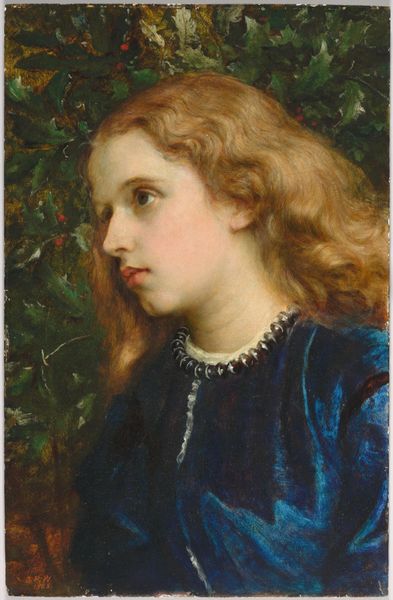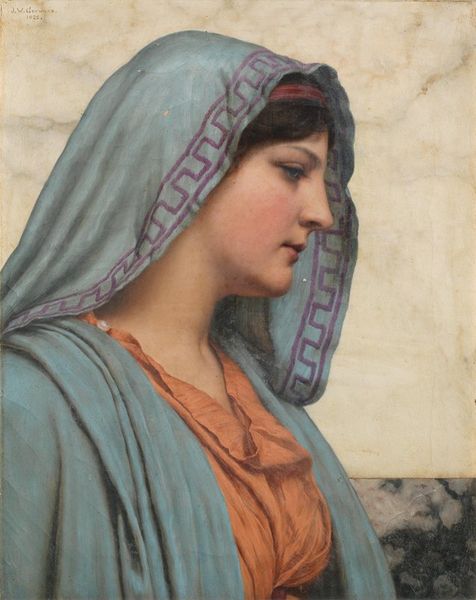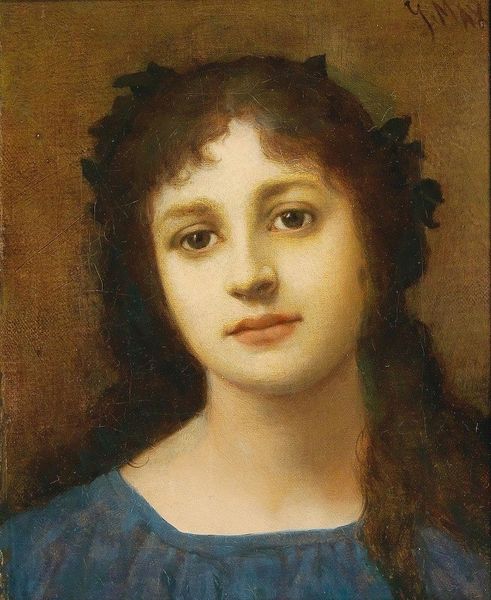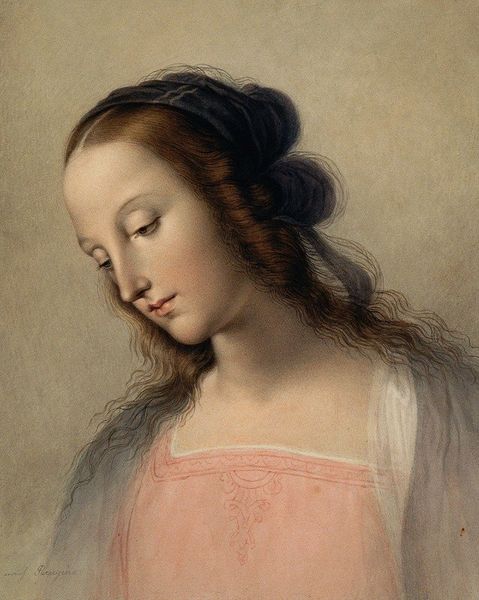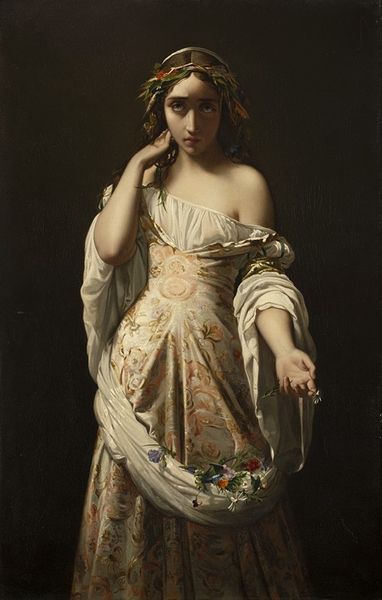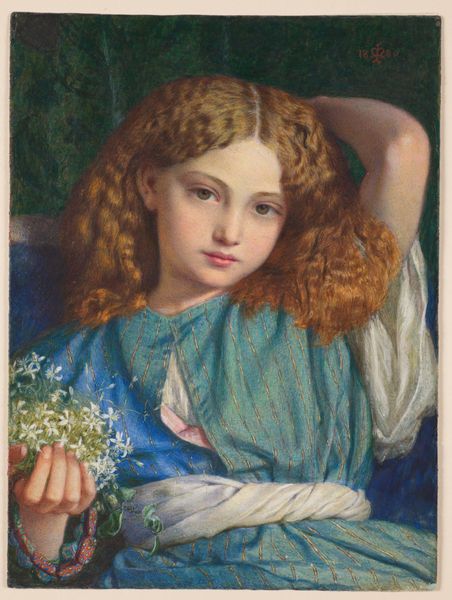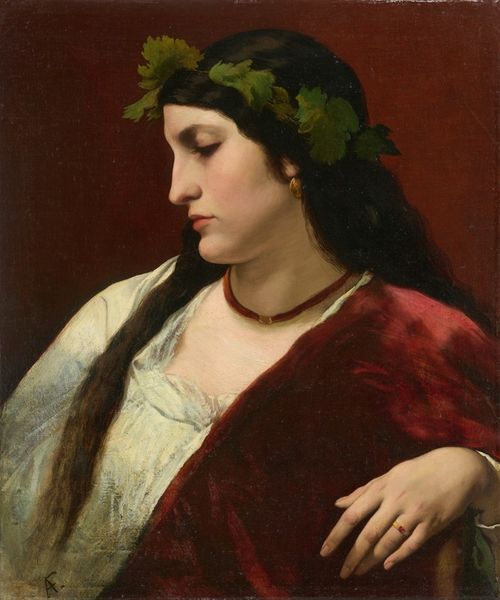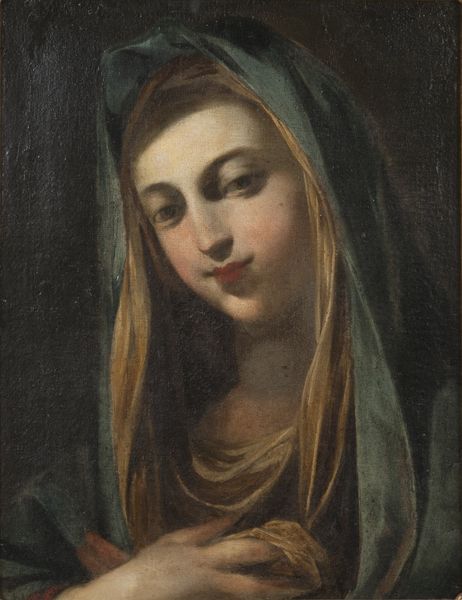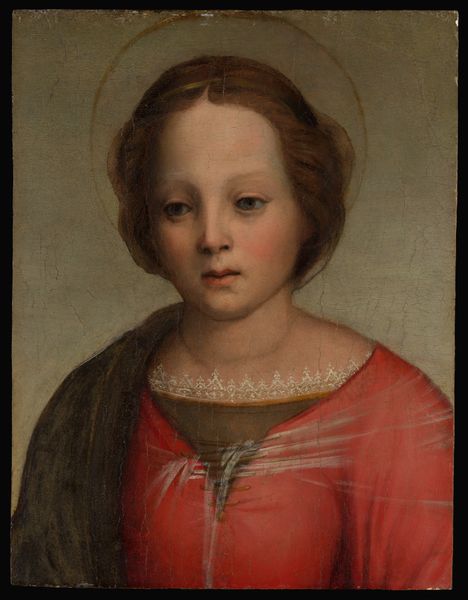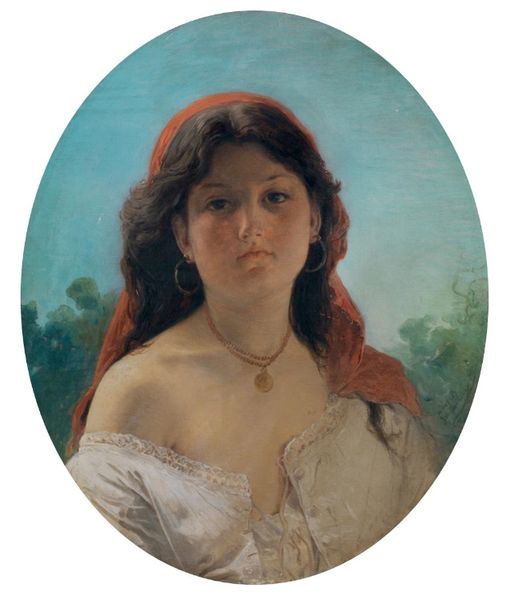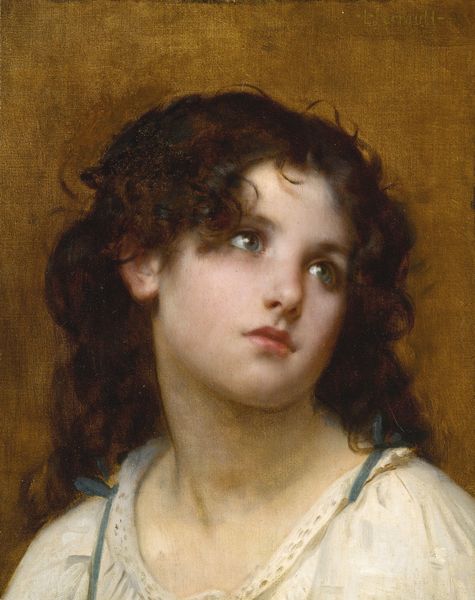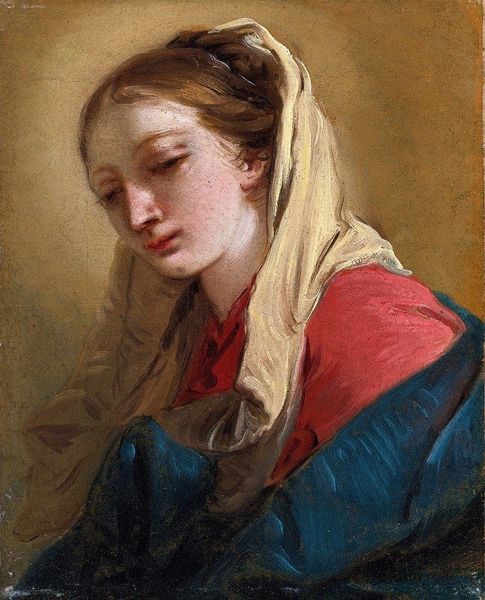
painting, oil-paint
#
portrait
#
16_19th-century
#
painting
#
oil-paint
#
landscape
#
figuration
#
romanticism
#
academic-art
Dimensions: 44.5 x 38.0 cm
Copyright: Public Domain
Editor: Here we have Ernst Deger's "Portrait of a Young Woman" from 1835, crafted with oil paint. The woman's gaze and the soft lighting create a really serene mood, but the fabric of her dress looks so rich and velvety. I wonder, what do you see in this piece beyond its obvious beauty? Curator: For me, it is important to recognize this work within the context of burgeoning industrialization. Deger's labor meticulously renders fabric, a material becoming increasingly accessible through mass production, and elevates it through artistic representation. The gold trim, the jewel, the cross - can be considered signifiers of status achieved through nascent capitalism, meticulously crafted for a patron class eager to distinguish itself. Does the portrait romanticize or critique the evolving material conditions of its time? Editor: That's a great point. It's easy to see just a pretty picture, but you're making me think about the context and how the materials used and depicted speak to broader economic shifts. The velvety fabric is more than just texture; it’s about access and class! Curator: Precisely. Consider also the labour invested: the mining for pigments, the milling of the canvas, the woman sitting, perhaps for hours, if not days on end. Editor: Right, the entire process relies on labor and resources. Curator: It forces us to ask: Whose labor are we seeing and not seeing? The availability of materials dictates what Deger paints; its beauty, as you mentioned, distracts us from the implied labour involved. What we consume aesthetically often obscures the means of its creation. Editor: It really changes how I see it now. I was focused on the subject, but the materials themselves tell such a powerful story. Curator: Exactly! So many unseen hands shaping a surface narrative of beauty, serenity and religious virtue. The means of artistic production as part of the story. Editor: Thanks! That’s a perspective I hadn't considered. I appreciate learning that materials, like textiles and paint, hold a lot of meaning. Curator: And by deconstructing, rather than being passively pleased with, those images is how meaning, historical insight, and knowledge production evolves.
Comments
stadelmuseum about 2 years ago
⋮
An angelic face: the girl in historical garments lowers her gaze demurely, her reddish-brown curls gently framing her countenance. With depictions of religious themes and idealised portraits, Deger satisfied the tastes of the art market early on in his career. Initially training in Berlin, in 1829 the artist – who was influenced by Wilhelm Schadow – changed to the Kunstakademie Düsseldorf. He is considered one of the Düsseldorf Nazarenes, who drew from Italian Renaissance painting and the Early German masters in their endeavour to renew Christian art.
Join the conversation
Join millions of artists and users on Artera today and experience the ultimate creative platform.

